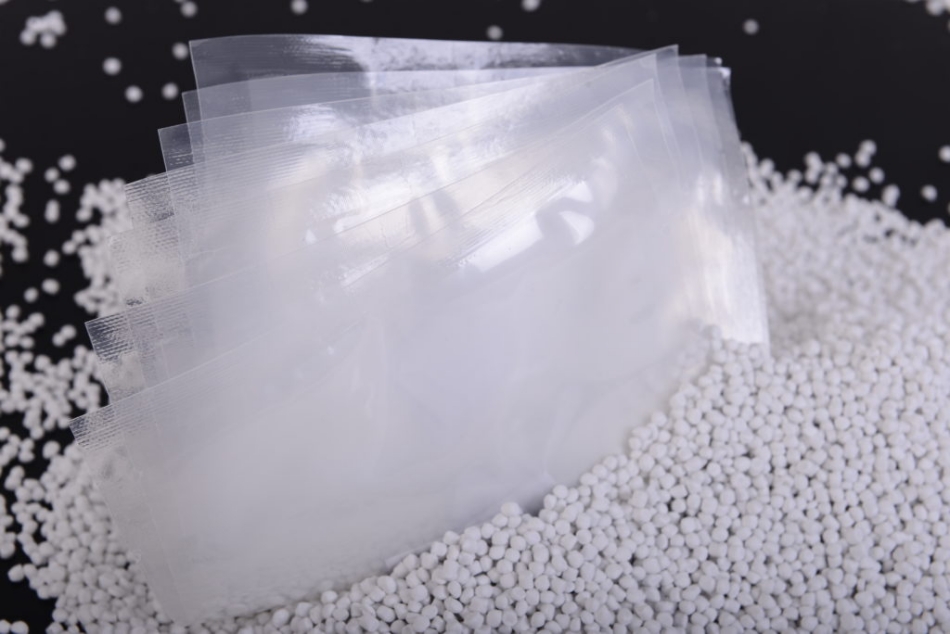Thanks to its tremendous benefits, CaCO3 filler masterbatch has become an indispensable component in many industries, especially in the blown film sector. However, the use of this substance normally requires careful consideration to minimize the possibility of mechanical degradation of end-products. In this article, let’s take a look at a few tips to help you take full advantage of this powerful material!
There is no denying that CaCO3 filler masterbatch is one of the largest contributors to the development of the blown film industry. CaCO3 filler (also known as calcium carbonate filler) is a combination of calcium carbonate powder, plastic resin, and other specific additives. Since its first introduction, this substance has been enthusiastically embraced as it partly replaces pure resins, thus lessening the dependence on non-renewable materials and helping plastic manufacturers save a large amount of production cost. Like other types of components, the application of CaCO3 filler masterbatch requires strict guidance regarding some criteria such as formula, particle size, and usage rate to achieve the best results.
1. Criteria when applying CaCO3 filler masterbatch in the blown film industry
To figure out the best suit for your products, plastic enterprises should take the following factors into their considerations.
1.1. Current plastic resin
This might be the most important factor to be noted. As each type of resin has a specific processing temperature, it would be a disaster if the filler masterbatch you are using is made of a different resin from your current one. The incompatibility between them will immediately end up with poor dispersion of the filler on the films. Hence, to make these components well-mixed, a compatible resin is a must. In fact, this requirement is not a big deal as the CaCO3 filler masterbatch itself is composed of resins, and most CaCO3 fillers are tailor-made based on your requests.
 CaCO3 fller masterbatch need to fit current plastic resin
CaCO3 fller masterbatch need to fit current plastic resin 1.2. Film thickness
The thickness of the film determines the particle size of CaCO3 powder and the usage rate of the filler masterbatch. For a thick film layer, a greater loading rate of CaCO3 filler masterbatch which has a bigger particle size is required. Whereas, a lower amount of CaCO3 filler with a smaller particle size should be introduced to thinner film layers. Normally, a 20mic film layer requires a loading rate of filler masterbatch from 15% to 30% and particle-sized 3mic and above. While for those whose thickness is under 20mic, the usage rate is maximally around 20% with lower 3mic-sized particles.
1.3. Film transparency and plasticity
Another decisive factor in choosing a CaCO3 filler masterbatch is the level of transparency and plasticity of the film. The larger amount of CaCO3 filler used, the more opaque and rigid the films become. In other words, the application of calcium carbonate filler makes the film less transparent and flexible. Thus, plastic enterprises should consider carefully figuring out the most appropriate usage rate of CaCO3 filler. In case a transparent film layer is required, another type of plastic filler named barium sulfate filler should be embedded in replacement of calcium carbonate filler for the highest-quality outcomes.
 The larger amount of CaCO3 filler is used, the more opaque and rigid the films become
The larger amount of CaCO3 filler is used, the more opaque and rigid the films becomeAll things considered, as long as all necessary criteria are reviewed carefully, plastic enterprises can reap several benefits from filler masterbatch including:
- Save on material costs as CaCO3 powder is more affordable than plastic resins.
- Shorten the time consumed for each product cycle thanks to the great thermal ability of CaCO3
- Save on energy consumption
- Enhance products’ mechanical properties such as (bend resistance, impact strength, tear resistance,...)
- Increase products’ printability
2. Common applications of CaCO3 filler masterbatch in the blown film industry
One of the most outstanding advantages of CaCO3 filler masterbatch is its customization to exactly suit end-products. Depending on end-products’ requirements, the formula and loading rate of filler masterbatch will be adjusted accordingly. Thanks to this, it is widely used in various applications in the blown film industry.
2.1. F&B industry
The F&B industry may be one of the most important end-use markets of the blown film field. Thousands of products in this sector are the outputs of the blown film process such as food wrappers, waste bags, and rolled bags,... With a huge amount of food packaging consumed annually, it is extremely important for manufacturers to find a cost-effective alternative to fossil resins, which are widely known for their high expenses, uncertainty, and harmful effects on human health. However, the most difficult part for the new material is to strike a balance between health safety and economic efficiency. That’s why CaCO3 filler masterbatch has come into use as an ideal replacement.
 CaCO3 filler masterbatch is commonly applied in food wrappers, rolled bags,...
CaCO3 filler masterbatch is commonly applied in food wrappers, rolled bags,...Unlike its counterpart, calcium carbonate filler is much more reasonable and stable, thus helping plastic manufacturers cut down on production costs. Moreover, it also reduces the carbon footprint released into the atmosphere and barely causes any negative impacts on end-users. For all of those plus points, CaCO3 filler has become an indispensable part of producing food packaging films.
2.2. Retail industry
Retail is also a popular end-use market of the blown film industry, and also CaCO3 filler masterbatch. This material is widely used in several applications such as shopping bags, and T-shirt bags,... with a view to decrease the production cost while retaining the mechanical properties of the packaging films. For this industry, PE filler masterbatch is normally preferred thanks to its great flexibility and plasticity. .
 CaCO3 filler is widely used in several applications such as shopping bags, T-shirt bags,...
CaCO3 filler is widely used in several applications such as shopping bags, T-shirt bags,... 2.3. Medical industry
Not usually mentioned but the medical industry is also a large contributor to the consumption of filler masterbatch. Some common applications of CaCO3 filler in this sector include blister packaging, individual - wrap packages, pouches,...
 Medical industry is also a large contributor to the consumption of filler masterbatch
Medical industry is also a large contributor to the consumption of filler masterbatch2.4. Agricultural industry
Last but not least, the agricultural industry is also a vital segment of the blown film market. For this industry, the key requirement for the films is the weather durability, thus CaCO3 filler masterbatch is commonly used with some types of weather stabilizers to enhance the films’ mechanical properties. Some popular applications in this industry are greenhouse film, crop forcing film, silage film, silage stretch film,...
 Greenhouse film, crop forcing film, silage film, silage stretch film,... common applications in agriculture
Greenhouse film, crop forcing film, silage film, silage stretch film,... common applications in agricultureThe applications of CaCO3 filler in those fields have significantly improved the economic effeciency by reducing production cost and shortening the product cycle.
3. EuroPlas CaCO3 filler masterbatch
If you are in search of a trusted filler masterbatch, then “Congratulations! You found us!”. Having penetrated the plastic raw material market for nearly 14 years, EuP takes pride in getting into the World’s Top 5 largest filler masterbatch manufacturers. Thanks to the natural calcium carbonate resource, experienced experts, and state-of-the-art technology, EuP can provide customers with excellent quality CaCO3 filler masterbatch. Most importantly, our fillers are always customized to exactly meet your requirements.
Currently, EuP offers customers various types of filler masterbatch, which are available in over 80 countries. For further details and consultation, don’t hesitate to contact us!